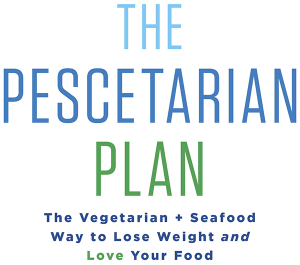Seafood Best Bests
These are purest, “cleanest” types of popular seafood, and staples on The Pescetarian Plan. Take this list with you to the market or restaurants (or look it up on your smart phone) .
Seafood in blue are rich in health-promoting omega-3 fats.
| Seafood | Most sustainable type |
|---|---|
| ARCTIC CHAR | Farmed in the U.S., Canada, Norway, Iceland |
| CATFISH (U.S. farm-raised) Note: Avoid wild-caught, it may be high in contaminants | Farmed in the U.S. |
| CLAMS | Farmed world-wide |
| COD, ATLANTIC | Hook-and-line caught from Iceland, Norway and Russian |
| COD, PACIFIC | Caught by bottom long-line, jig or trap from the U.S |
| FLATFISH/FLOUNDER | Wild-caught in the U.S. Pacific |
| HADDOCK | Hook-and-line caught in the U.S. Atlantic |
| MACKEREL, ATLANTIC Note: Not King Mackerel, which is high in contaminants. | Wild-caught in Alaska |
| MUSSELS | Farmed world-wide |
| OYSTER | Farmed world-wide |
| SALMON *, WILD-CAUGHT (canned, fresh or frozen) | Alaskan Chinook, Coho, Chum, Keta, King, Pink, Red, Silver, Sockeye and Sake salmon caught by drift gillnet, purse seine, or troll |
| SARDINES, PACIFIC | Wild-caught in the U.S. |
| SCALLOPS, BAY | Farmed world-wide |
| SCALLOPS, SEA | Diver-caught in the Mexican States of Baja California Sur in Laguna Ojo de Liebre and Guerrero Negro; dredge-caught in Alaska |
| SHRIMP/PRAWNSNOTE: Because shrimp are high in cholesterol, limit to twice a week. | Freshwater prawn farmed in the U.S.; pink shrimp wild-caught in Oregon; shrimp farmed in recirculating systems or inland ponds in the U.S.; spot prawns wild-caught in the Canadian Pacific |
| SQUID (CALAMARI)NOTE: Because squid is very high in cholesterol, limit to once a week. | Trawl-caught in the U.S. Atlantic |
| TILAPIA | Farmed in the U.S. |
| TROUT, RAINBOW | Farm-raised in the U.S. |
* Although salmon is low in mercury, according to some studies, farm-raised salmon can contain high levels of another contaminant—persistent organic pollutants (explained on page 117 of The Pescetarian Plan). That’s why farm-raised salmon didn’t make this list. But it’s OK to eat it if you limit consumption to no more than six ounces, six times per month.
